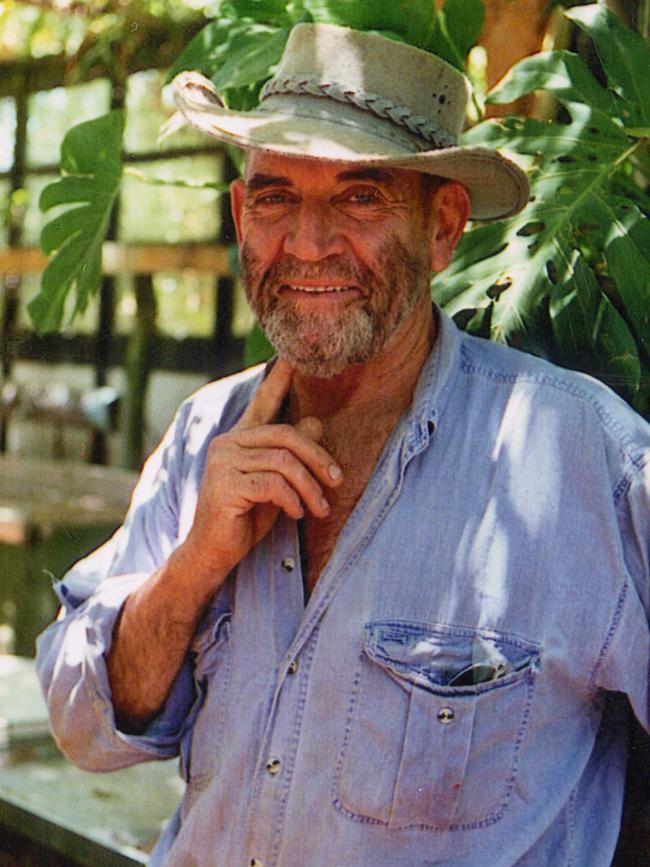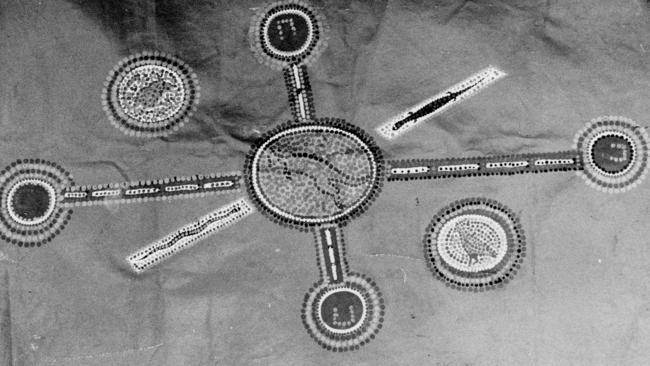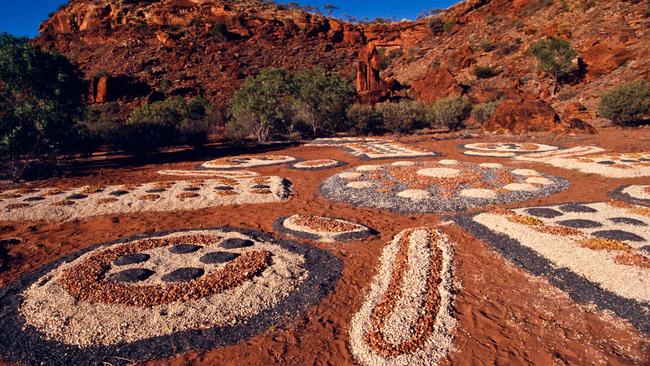Alice Springs artist Bardius Goldberg was the creator of the Marree Man, according to old friend and KI mayor
ONE of Australia’s greatest mysteries of who created the 4.2km Marree Man may finally be solved. A South Australian mayor says he was told by his old friend on his death bed that he was the creator.
SA News
Don't miss out on the headlines from SA News. Followed categories will be added to My News.
ONE of Australia’s great mysteries of who created the 4.2km-long Marree Man may finally be solved, after the secret was shared by the artist on his death bed.
Alice Springs artist, stonemason and sculptor Bardius Goldberg shared the origins of the Aboriginal figure with his old-friend and Kangaroo Island mayor Peter Clements.
Mr Clements, who lived in Alice Springs from 1989 to 2004, said he visited Goldberg at Flinders Hospital, in 2002, where he confessed to being the creator of the geoglyph.

“At the time we were reminiscing about all the good things that had happened and we got talking about Marree Man and that’s when he told me,” Mr Clements said.
“He may have told other people I don’t know, no one else has come out about it.
“It was only after I saw The Advertiser’s article I thought people needed to know.”
The Advertiser yesterday reported entrepreneur Dick Smith had issued a $5000 reward for any evidence on who masterminded the creation.
Mr Clements said he believed the Marree Man was sparked from Goldberg’s failed attempt to create the world’s largest ground painting, in Central Australia, in 1990.
“Bardius left Central Australia with his tail between his legs because he was that depressed and upset his major project was squashed by bureaucracy,” he said.
“So when I heard about the Marree Man I immediately said to myself ‘that’s where Bardius has gone’.”
Mr Clements described Goldberg, whose real name was David Fish, as an “eccentric person” and “out-of-the square thinker”, who had wanted to create a 1.6km-long ground painting from three types of rocks.

Kumantji – a former Haasts Bluff custodian – had asked Goldberg how they could attract more tourists to Ipolera, a community 178km west of Alice Springs. “I recall there was a long silence then Bardius threw his coffee dregs into the sand which created a random pattern of droplets in the red earth,” Mr Clements said.
“Bardius immediately stood up and said ‘Kumantji I’ve got it, we’ll create the world’s biggest ground painting’.”
Mr Clements helped form the Ipolera Ground Painting Steering Committee, to create the artwork at Tjilpa Valley, near the Ipolera campground.
By 1990, a pattern was graded into the land and attracted interest from NASA, which has a defence facility at Pine Cap, and Qantas, which included the concept in their flight magazine. But the cost to transport black rocks from Tennant Creek, 685km northeast, became the downfall of the project, which failed to attract government funding.
A small version of a ground painting exists at Tjilpa Valley.



